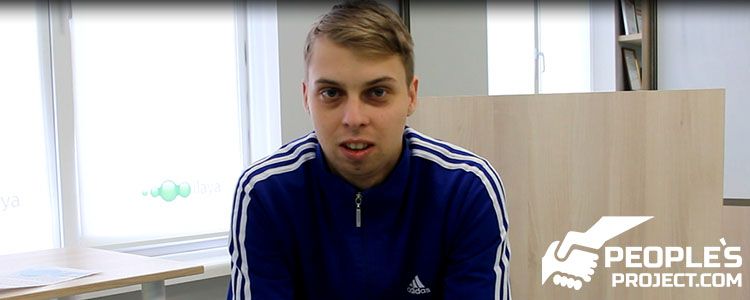

On the night of July 11, 2014, the military camp...

On the night of July 11, 2014, the military camp of the 24th separate mechanized brigade situated 17 kilometers from Zelenopillya (Luhansk region) came under heavy fire. Volodymyr Domnich, 19, was awakened by a sudden feeling of cold and wet on his legs. When he looked down he saw they were covered in blood. Loud bangs and the smell of gunpowder in the air made it clear they were under attack. This night was the last for many of his fellow soldiers. However, a column carrying the wounded miraculously escaped the fire. He had shrapnel wounds to both legs, but had survived. He was brought to Dnepropetrovsk military hospital, where doctors suggested amputation of his left foot, and later transferred to a hospital in Lviv.
However, if Volodymyr had not been taken on by the Ilaya Medical Center in Kyiv, amputation could not have been avoided. He became one of the first patients to receive the clinic’s unique biotechnology stem cell-based treatment for the restoration of lost bone and tissue. His treatment was funded via donations to The People’s Project. Volodymyr’s example clearly demonstrates the benefits of a modern medical treatment that still meets some resistance in the conventional medical community.
Despite critics, Volodymyr has now fully recovered after his treatment as part of the Bioengineering Rehabilitation for Wounded project and has gone on to fulfil a long-held ambition after he was granted entry into the Lviv Army Academy. He has now passed his training and is back to normal life. His immediate plans for the future are to take his qualifications from the university and find a job in the military. Volodymyr is going to return to the front, now serving as a driver.
He is convinced his story should inspire other wounded:
“In a lot of ways, rehabilitation depends on the person. If a person is willing, then he will do everything he can to help himself, go to massage therapists, I did not stop or lose hope. Sometimes I wanted to; I went to a sanitorium resort. Within two weeks function of my foot was almost completely restored. I experienced much pain putting weight on my leg; I did everything to start walking again… I believe anyone who wants something enough will be sure to succeed.”
Through examples like Volodymyr, we are able to silence the naysayers. In conventional medical circles biotech rehabilitation faces unfair accusations that it returns only the “anatomy” of the limb, but there is no guarantee of the recovery of full function and movement. Speaking in layman’s terms; if you restore the anatomy of a man who was perfectly healthy prior to injury, then all function can also be restored. The crucial factor is the desire of the person to put in the hard work during the rehabilitation period. Volodymyr has proved that. See a video interview with the fighter (in Ukrainian):
Now, the project is focused on creating similar success stories to that of Volodymyr and others; get involved.